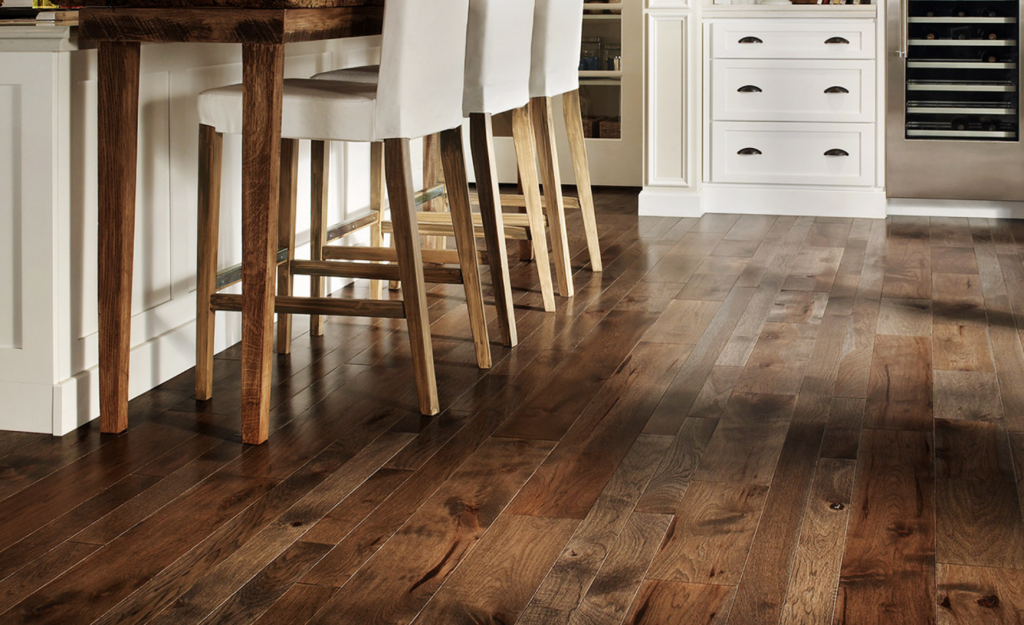Bamboo flooring is produced from bamboo wood. It is durable, sturdy, and beautiful. Bamboo wood flooring is made after shining and smoothing the bamboo. Unlike other types of wood, bamboo needs less processing before it is used as flooring. Because bamboo is narrow and tall in structure, it requires less processing duration. This is one of the reasons why bamboo has gained tremendous popularity all over the globe.
Bamboo wood flooring is among the newest flooring materials. It is the perfect option if you intend to use chemically processed flooring material. If you are looking for high-quality hardwood flooring, then bamboo wood flooring is the best choice for you. That’s because it’s long-lasting and scratch-resistant specs that are not available in other woods.
Let’s look at the types of bamboo flooring
Engineered Bamboo
Engineered bamboo wood flooring is attributed to its similarity to engineered hardwood flooring that entails cross-brand for strength, multiple layers,doesn’tIt’sIt’sit’s, and glued on a base. Furthermore, it is ideal for humid and dry climates. If you are searching for the best option and convenient floor system, this flooring system is the best.
Teragren Bamboo
Creating this piece requires the expert to cut bamboo stalks into tiny slats and then laminate them together using adhesive and hydraulic pressure. Furthermore, teragram bamboo flooring is an eco-friendly form of flooring utilized in the industry currently. This bamboo wood flooring undergoes stringent quality regulation after german standards.
Carbonized Bamboo Flooring
While carbonized bamboo flooring looks beautiful, manufacturers are cautious since its durability might be affected by the procedure utilized to make it dark. Bamboo wood is treated with steam after it is harvested and shaped into strips.
Heating the bamboo for long hours makes the wood darker. Additionally, it depends on other materials utilized to make the last strains on the wood once the carbonization procedure has been complicated.
Strand Woven Bamboo
When bamboo strands are cut, boiled, and allowed to dry for some time, this flooring system is made. After this method, hard-pressing is utilized to flatten the strands. After this, they will be ready to be cut into various planks and sizes as needed and then woven together and glued. Typically, this kind of flooring system is sublime because it is durable, elegant, and beautiful. Strand woven bamboo is a perfect option for green flooring, and it’s popular in residential and commercial applications.
Solid Bamboo
It’s made of bamboo. First, the bamboo stalk is isolated equally and refined, and then pressed into sheets. It is accessible in carbonized, strained, and vertical or horizontal floors. While solid flooring is similar to solid hardwood, it tends to contract and expend less.
Benefits of Bamboo Flooring
Bamboo wood flooring has many benefits over ordinary hardwood flooring. It offers property owners a mix of stunning looks, affordable materials, easy installation, and eco-friendly gifts. Here are some of the advantages of bamboo wood flooring.
● Strain and Water-Resistant
Bamboo has incredible absorption, unlike hardwood. When it is exposed to water, the hardwood floor tends to degenerate. Since bamboo is stain-resistant, it is easy to clean. However, make sure to clean the bamboo floor instantly if you notice some spills on it, particularly milk or red wine.
● Durability and Strength
Bamboo is well-known for its strength and durability, letting it support even larger weights. It’s even stronger than many hardwood floors.
● Economical
Bamboo prices are lower than most woods of similar quality due to their superfluity. It is cheap and easy to manufacture and install bamboo wood flooring. Also, it requires limited space for reproduction because bamboo sprouts will grow from the spot it was cut. Its growth and maturity make it difficult to deplete, and thus increasing supply. So, the cheap manufacturing process and the availability of materials make bamboo an economical source.
● Easier Installation
Installing bamboo entails a straightforward process. It can be glued or nailed and doesn’t need similar cutting tools as hardwoods such as oak and mahogany. Because it uses hand instruments, the propensity for the homeowner to install the floor on their own will save a lot of money. The bamboo can be installed onto inexpensive plywood or a concrete subfloor.

